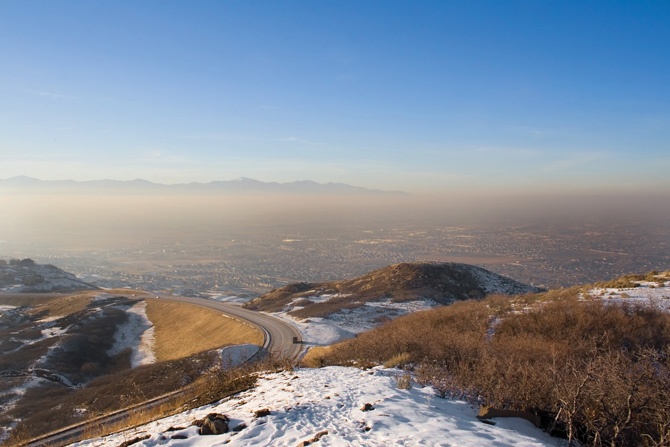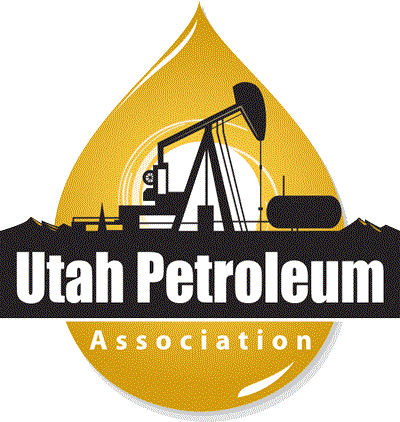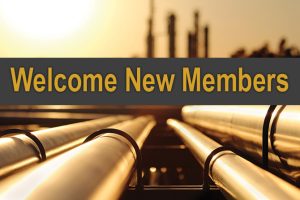Given our state’s ozone challenges, UPA has been working collaboratively with our regulators anticipating rulemaking in support of a forthcoming State Implementation Plan (SIP), both for the Wasatch Front and the Uintah Basin. In the Basin, while the outcome of this winter is not yet determined, it serves as the critical fork in the road to either a path/redesignation of the standard or a “bump” from marginal to moderate nonattainment status. We will need to ensure that we can continue to reduce VOC and NOx emissions in either case. To that end, the Utah Division of Air Quality (DAQ) is in the process of proposing rules, likely to be presented to the Air Quality Board in March to kick off formal rulemaking, with a target to be effective Jan. 1, 2023, focused on the following (note that this is a high-level summary, not a comprehensive outline of the draft proposal):
- R307-506-Storage Vessels:
- Removes the exemption from the rule for sites with an Approval Order (AO)
- Lowers the applicability threshold for crude oil from 8,000 to 3,200 barrels
- Requires controls for applicable tanks “at all times”
- Changes to emergency relief storage vessels, including reducing the time period for the vessel to be emptied from 15 days to 48 hours after it receives fluids
- Adds pressure relief devices to required monthly inspections and repairs
- R307-508-VOC Control Devices:
- Removes the exemption from the rule for sites with an AO
- Requires operations to meet manufacturer specifications or equivalent
- Requires air pollution control equipment to be adequately designed and sized to achieve the control efficiency and reasonably foreseeable fluctuations, including separator dumps
- R307-509-Leak Detection and Repair:
- Removes the exemption from the rule for sites with an AO
- Adds requirements for fugitive emissions surveys with very specific timing of surveys as well as requiring a survey be performed within seven days of a well site becoming operational after being shut-in or temporarily abandoned
- R307-511-Associated Gas Flaring:
- Removes the exemption from the rule for sites with an Approval Order (AO)
- Clarifies recordkeeping requirements for flaring
The U.S. Environmental Protection Agency (EPA) also announced a proposal in November 2021 to significantly reduce methane emissions from new and (for the first time) existing oil and gas sources across the U.S.. UPA held a special webinar on the rule in November, and many thanks to Jenn Biever from the law firm Williams Weese Pepple & Ferguson for her expertise in efficiently unpacking this very comprehensive proposal. While the proposed rule is far too extensive to summarize here, details are available at: https://www.epa.gov/newsreleases/us-sharply-cut-methane-pollution-threatens-climate-and-public-health.
We believe policy should encourage innovation; incentivize the development and deployment of technologies to monitor and mitigate methane emissions for compliance purposes; allow flexibility; appropriately quantify and assess the feasibility, costs and benefits of implementing new requirements for existing facilities; and properly interpret and follow the relevant provisions of the Clean Air Act.
UPA recognizes the importance of reducing methane emissions in key emitting sectors, including energy, as part of a comprehensive strategy to address the risks of climate change. We support cost-effective policies and direct regulation that achieve methane emission reductions from new and existing sources across the supply chain. We believe policy should encourage innovation; incentivize the development and deployment of technologies to monitor and mitigate methane emissions for compliance purposes; allow flexibility; appropriately quantify and assess the feasibility, costs and benefits of implementing new requirements for existing facilities; and properly interpret and follow the relevant provisions of the Clean Air Act.
We also recognize that methane emissions and VOC/NOx emissions needed to reduce ozone go hand in hand, with potential overlaps and interactions between the proposed EPA OOOO rules and the efforts and rulemakings associated with the Basin ozone SIP. While regional, national and other trade groups that we regularly collaborate with will be commenting on general provisions of the proposal that apply to industry across the board, UPA’s comments will focus on Utah specific issues, some of which include:
- Special consideration needs to be given to retain and align with Utah’s Permit by Rule
- We encourage EPA to finalize the Uinta Basin ozone nonattainment FIP for sources located on Tribal lands as expeditiously as possible and recognize the interplay between the newly proposed OOOO rules and the FIP
- Impact on small businesses, which includes UPA member companies, and ways to accomplish the stated objectives while minimizing significant economic impacts of the proposed rule
- Labor and supply chain shortages that must be considered in terms of implementation requirements
- The limited electrification of the basin and challenges to further expanding grid connectivity and capacity
We are also collaboratively engaging with DAQ in preparing for a Wasatch Front ozone SIP and the associated rulemakings needed. We continue to remain active in understanding the science and modeling driving these rulemakings and encourage a data-driven approach to policymaking. If you would like to learn more about these important rulemakings along the Wasatch Front and in the Uintah Basin, you are welcome to join UPA and engage in our committees tackling these issues in detail.










